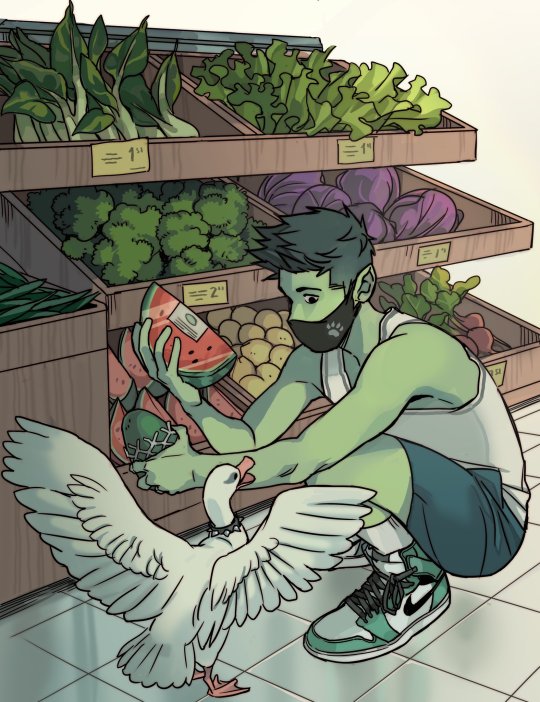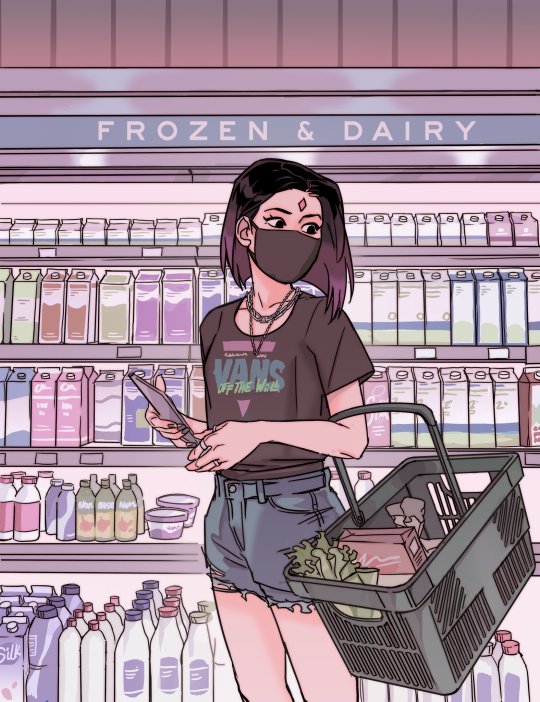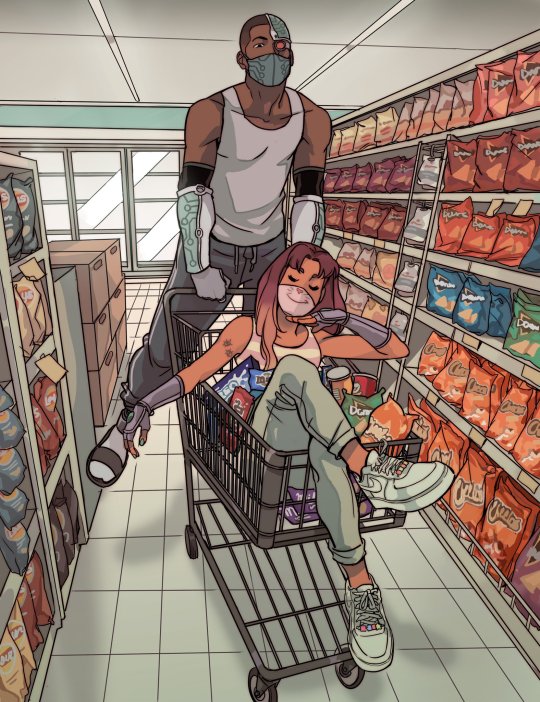just another young wizard/writer in training, feel free to say waddup
Don't wanna be here? Send us removal request.
Text
This is the funniest review I have ever seen. He is all of us 💀
Credit: Chuzus on YouTube!
10K notes
·
View notes
Photo










sophs-style:
The British Vogue and Tiffany & Co. Fashion and Film Party following the BAFTAs took place at Annabel’s on Sunday (13th March 2022) in London.
Lily James (wearing Roberto Cavalli), Eiza González (wearing Nué), Paloma Elsesser (wearing Simone Rocha), Florence Pugh (wearing Halpern), Nicola Coughlan (wearing Christopher Kane), Jourdan Dunn (wearing Miss Sohee), Billie Piper (wearing Roberto Cavalli), Alexa Demie (wearing Alaia), Eva Apio (wearing Roberto Cavalli) and Simone Ashley (wearing Valentino).
17 notes
·
View notes
Photo





TINASHE Naturally | Live from The Kelly Clarkson Show
282 notes
·
View notes
Note
I don’t know who should be the protagonist in my story. It sometimes seems there may even be a deuteragonist. Is there tips for me to be able to figure that out?
Choosing the Protagonist Among Many Possibilities
There are a few different ways you can go about this, but there are a few things you'll want to make sure you know first:
what your story is about--what's going to happen and why
what you want to say with the story (the message, if any)
what themes you want to explore (if any)
the internal conflict of the potential protagonists
the external conflict
how the potential protagonists will change with story events
Here are some points to consider when choosing the best protagonist
1) Whose internal conflict/change arc ties in best with the events of the story.
2) Whose internal conflict/change arc ties in best with the story's message (if there is one) or themes you want to explore (if any.)
3) Which character does (or can potentially do) the most to drive the events of the story forward, either by making events happen through their own choices (character-driven) or by their response to events that happen to them (plot-driven)--or a combination of both.
4) Which character has the most interesting/important vantage point of the events of the story?
5) Which character is the most interesting?
I hope that helps!
•••••••••••••••••••••••••••••••••
Have a writing question? My inbox is always open!
Visit my FAQ
Find answers fast on my Master List of Top Posts
Go to ko-fi.com/wqa to buy me coffee or see my commissions!
177 notes
·
View notes
Photo


NORMANI Leaving Beauty & Essex in Hollywood | March 17, 2022
475 notes
·
View notes
Photo




JESSIE MEI LI by Rafael Pavarotti for Vogue Italia
1K notes
·
View notes
Photo





@normani: imma be eighty years old talking about this trip
898 notes
·
View notes
Text

lil comic practice with Atsuko and her awakening !! The text is probably a little hard to read in some parts
62 notes
·
View notes
Photo




My old P5 OC needed a Persona 5 Royal overhaul. Now with seasonal outfits, modified thief outfit and personas and a third awakening
—- Since tumblr decided to blacklist links in tags, please consider checking out my blog description for links to my twitter, commissions and ko-fi
366 notes
·
View notes
Photo






🧡 HIRO KOBAYASHI - Persona 5 OC showcase 🧡 Finally one of my most precious OCs is here in his full glory, Hiro has gone through many changes and finally I am so happy how her looks!! I worked so long and researched so much for him and I can say that I am completely proud of how he ended up being and how this post looks :’) My sister (@criacuervoz) was the creator of Danuja she will write info about her if y'all are interested to know more!!
Also disclaimer: Hepha (metal skill) and Fae (fairy skill) are just made up since we wanted Hiro and Danuja have their own skills :) I really hope you guys like it and this going out for the P5 fans!!
the information of his role in the game is under the cut.
Keep reading
102 notes
·
View notes
Text
Tips for Writing a Difficult Scene
Every writer inevitably gets to that scene that just doesn't want to work. It doesn't flow, no matter how hard you try. Well, here are some things to try to get out of that rut:
1. Change the weather
I know this doesn't sound like it'll make much of a difference, but trust me when I say it does.
Every single time I've tried this, it worked and the scene flowed magically.
2. Change the POV
If your book has multiple POV characters, it might be a good idea to switch the scene to another character's perspective.
9/10 times, this will make the scene flow better.
3. Start the scene earlier/later
Oftentimes, a scene just doesn't work because you're not starting in the right place.
Perhaps you're starting too late and giving too little context. Perhaps some description or character introspection is needed before you dive in.
Alternatively, you may be taking too long to get to the actual point of the scene. Would it help to dive straight into the action without much ado?
4. Write only the dialogue
If your scene involves dialogue, it can help immensely to write only the spoken words the first time round.
It's even better if you highlight different characters' speech in different colors.
Then, later on, you can go back and fill in the dialogue tags, description etc.
5. Fuck it and use a placeholder
If nothing works, it's time to move on.
Rather than perpetually getting stuck on that one scene, use a placeholder. Something like: [they escape somehow] or [big emotional talk].
And then continue with the draft.
This'll help you keep momentum and, maybe, make the scene easier to write later on once you have a better grasp on the plot and characters.
Trust me, I do this all the time.
It can take some practice to get past your Type A brain screaming at you, but it's worth it.
So, those are some things to try when a scene is being difficult. I hope that these tips help :)
Reblog if you found this post useful. Comment with your own tips. Follow me for similar content.
53K notes
·
View notes
Note
How do you make a character's backstory? Not what it needs but if you need to write it very detailed, simple or complexed for example
Guide: Character Back Stories
What is a Character Back Story?
From the day you’re born, you begin racking up experiences that are a result of your environment, the people around you, and the things that happen to you. These experiences, and how they affected you, play a huge role in who you are at every stage of your life by influencing things like: personality, likes and dislikes, hopes and dreams, pet peeves and fears, wants and needs, skills and career, hobbies and interests, knowledge and the choices you make are all affected by your previous experiences. All of those things can be transformed over and over again throughout life, especially when we go through “life-changing” experiences.
We want our characters to feel as real as possible to our reader, so a part of creating a realistic character is understanding their personal history and the effect their past experiences have had on who they are when the story begins. In fact, part of the point of stories about people (both fiction and non-fiction) is to examine how their experiences (or, more importantly, a life-changing event) changes who they are. That’s what we call a “character arc” in fiction.
How Do You Figure Out a Character’s Back Story?
Different writers have different processes for figuring out a character’s back story. Some writers like to create a fully fleshed out character and then figure out how that back story affects how they move through the plot. Other writers like to plot out how the character will move through the plot, then figure out what experiences might have led to those beliefs, desires, experiences, etc. And some people (like me) do a combination of the two, creating a basic framework for the back story, but tweaking and adding things as they become necessary throughout the story.
Cause and Effect: Experiences and Impact on Choices
Since your character’s experiences affect who they become and the choices they make, it’s important to consider the cause and effect relationship between experiences and choices. First, let’s look at a possible experience and see if we can brainstorm some possibilities for how it might affect the character’s traits:
Let’s say your character survived a bad flood as a child. How might that experience impact the following traits?
Personality - they might be a little high strung and panicky because they never feel truly safe in their environment.
Likes and Dislikes - they might like things that feel safe and secure. They probably dislike things that involve being on or near water.
Hopes and Dreams - they may dream of living someplace inland where there aren’t a lot of lakes and rivers. Or, maybe they dream of a career where they can prevent future floods.
Pet Peeves and Fears - they might be annoyed by people who enjoy water-related activities like fishing and boating. They might be afraid of big bodies of water and avoid being near it at all cost.
Wants and Needs - they might want or even need things that keep them away from bodies of water, like if they have to visit a place normally accessed by boat, they might need to find an alternate route, like flying or taking the long way by road.
Skills and Career - they may have acquired any number of survival skills during the flood, such as performing first aid and CPR. They may have enjoyed administering first aid during the flood, so they might choose a career as a first responder or medical personnel.
Hobbies and Interests - probably none of their interests and hobbies involve being on or near water. But maybe they have a strange fascination with painting bodies of water, or with reading about shipwrecks.
Knowledge and Choices - they may have a lot of knowledge about floods, why they happen, how things go wrong, what to do and not to do in a flood, laws and regulations meant to prevent flooding, knowing how water impacts the body, etc. And they may make choices that lead them to any of the above or away from them, as necessary.
These are all things you can brainstorm with a little thought, imagination, and research. But, if you can get a hold of The Positive Trait Thesaurus and The Negative Trait Thesaurus by Angela Ackerman and Becca Puglisi, do it… because these handy writing reference books not only walk you through potential causes of various traits, they also provide the behaviors and attitudes that commonly result from them. Knowing that helps you understand how your character’s cynicism affects their choices and moves them through the story.
How to Implement Back Story as You Write
Since you have fleshed out the cause and effect of your character’s experiences, you can start to look at things that happen in the story, then figure out how that resulting trait impacts any particular thing they have to say or do. You can do this systematically during the planning process, or you can do it as you write, always keeping in mind how these traits impact their choices.
How to Flesh Out/Organize Back Story Details
Your character’s back story should be a part of the overall character development you do when you create your character, so how you flesh out and organize those details will depend on your planning process. You may want to include back story details in an overall character summary, or you might include them in a character profile. You can find templates for these all over online, just be cautious of templates that are too detailed. No one cares what your character’s favorite gum flavor is, or whether they prefer glue or tape. Try to stick to fleshing out details that matter in the story, and the same is true of back story details.
Good luck with your story!
•••••••••••••••••••••••••••••••••
Have a writing question? My inbox is always open!
Visit my FAQ
See my Master List of Top Posts
Go to ko-fi.com/wqa to buy me coffee or see my commissions!
1K notes
·
View notes












